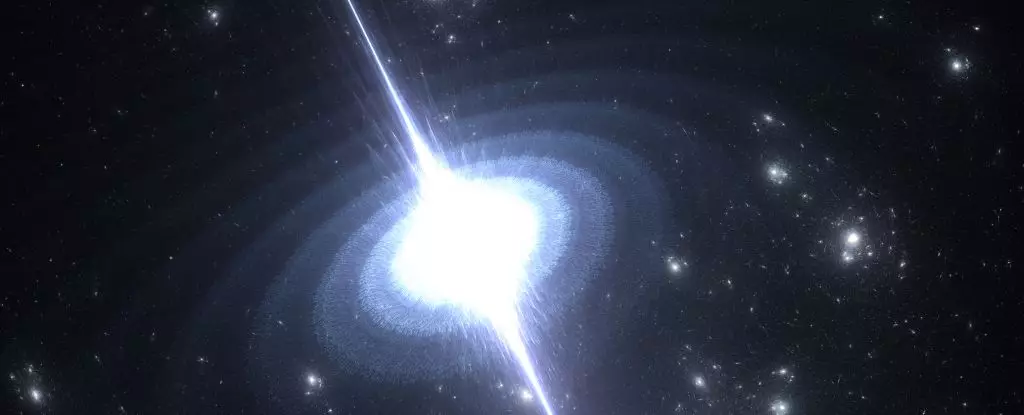The search for fundamental particles that could unlock the mysteries of the universe is a quest that has engaged scientists for decades. Among those elusive entities are axions, hypothetical particles proposed in the 1970s to address some of the more perplexing questions in particle physics and cosmology. Their existence, although not yet confirmed, could help to explain the nature of dark matter, one of the greatest enigmas humanity faces. Axions are believed to possess unique properties: they interact weakly with other matter, making their detection a formidable challenge. Their intriguing potential stems from the possibility that these particles could not only exist but might also occupy specific mass ranges corresponding to the behavior of dark matter.
Neutron stars, particularly pulsars, offer a compelling arena for studying axions. These dense remnants of massive stars are born from supernova explosions that collapse stellar cores into extraordinarily compact forms. The result is a body so dense that it resembles a singular atomic nucleus on a cosmic scale. Adding to their complexity, neutron stars harness magnetic fields far stronger than those found on Earth, rendering them extreme environments that might favor the production of axions. As these pulsars spin—some rotating at an astounding rate of several hundred times per second—they emit beams of radiation that sweep through space, giving them the appearance of cosmic lighthouses. This rapid rotation might enhance their gravitational potential, enabling them to trap axions more effectively.
The theoretical nature of axions brings with it a set of predictions regarding their behavior, particularly in the presence of strong magnetic fields. It is posited that axions could decay into pairs of photons when subjected to these powerful fields, creating a detectable signature of their existence. However, searches for such emissions from pulsars have yielded no definitive results. While the absence of detectable signals may seem pessimistic, such findings are not indicative of failure. Instead, they refine the parameters for future searches, narrowing the possible mass range of the axion.
Recent research suggests that even in the absence of immediate evidence for axions, the gravitational influence of neutron stars could lead to the accumulation of these particles around them. Over millions of years, axions might gather in clouds near the pulsar’s surface, potentially creating a faint yet ubiquitous layer of axion density. Interestingly, these clouds would be expected to be significantly denser than the surrounding dark matter, raising the tantalizing possibility of detecting their presence through the emissions from these dense collections.
If axion clouds indeed surround pulsars, the next challenge is to determine how their presence may register in observable data. Two primary hypotheses have emerged: First, a continuous emission signal might be detected, corresponding to a precise frequency in the radio spectrum where the axion’s mass would manifest. Some astrophysicists see the possibility of utilizing current and future radio telescopes to recognize subtle signals within the pulsar emissions. This could signify the axion’s existence and could unfurl further understanding of its mass.
Alternatively, the ultimate fate of pulsars might reveal irregularities in their emitted radiation patterns as they approach their cosmic end. While such events are projected to occur over trillions of years—a timescale far exceeding the current age of the universe—researchers are optimistic that tracking these celestial objects could unearth unexpected phenomena linked to their final throes.
While axions remain hypothetical, the research surrounding them opens new avenues of inquiry in fundamental physics and astrophysics. The study of pulsars as potential cosmic laboratories will continue to provide insights into dark matter and the fundamental structure of the universe. As technology develops and astronomers refine their methodologies, the elusive axion may gradually shift from the realm of hypothesis to a tangible entity, forever altering our understanding of the cosmos. As critical explorations delve deeper into these mysterious particles, humanity stands poised on the brink of potentially groundbreaking revelations. The intersection of theoretical physics and astronomical observation may well yield new horizons that challenge our comprehension of the universe’s most profound secrets.

